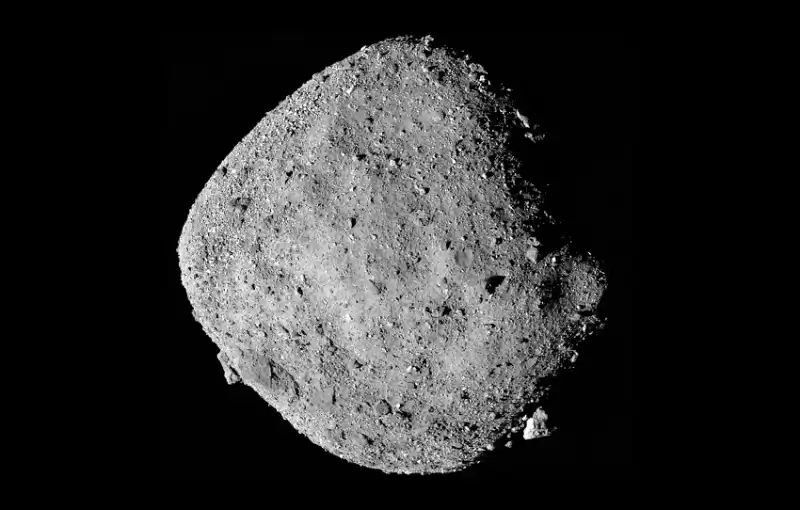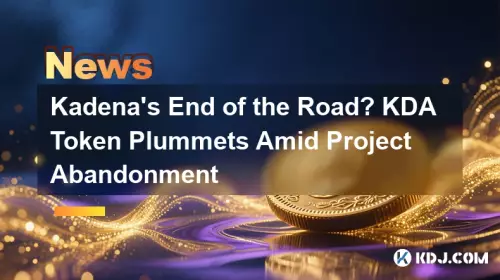 |
|
 |
|
 |
|
 |
|
 |
|
 |
|
 |
|
 |
|
 |
|
 |
|
 |
|
 |
|
 |
|
 |
|
 |
|
한국의 Pusan National University에있는 IBS 기후 물리학 센터 (IBS)의 연구원들이 Science Advances 저널에 발표 한 새로운 기후 모델링 연구는 잠재적 인 미래에 대한 반응으로 지구의 기후와 삶이 어떻게 변할 것인지에 대한 새로운 시나리오를 제시합니다. 중간 크기 (~ 500m) 소행성의 파업.

A new climate modeling study presents a scenario of how climate and life on our planet would change in response to a potential future strike of a medium-sized (~500 m) asteroid.
새로운 기후 모델링 연구는 중간 크기 (~ 500m) 소행성의 잠재적 인 미래 파업에 대한 반응으로 지구의 기후와 생명이 어떻게 변할 것인지에 대한 시나리오를 제시합니다.
The solar system is full of objects with near-Earth orbits. Most of them do not pose any threat to Earth, but some of them have been identified as objects of interest with non-negligible collision probabilities. Among them is the asteroid Bennu with a diameter of about 500 m, which, according to recent studies, has an estimated chance of 1-in-2700 of colliding with Earth in September 2182. This is similar to the probability of flipping a coin 11 times in a row with the same outcome.
태양계는 지구에 가까운 궤도가있는 물체로 가득합니다. 그들 대부분은 지구에 어떤 위협이되지 않지만, 그들 중 일부는 무시할 수없는 충돌 확률로 관심있는 대상으로 확인되었습니다. 그중에는 약 500m의 지름이있는 소행성 베누가 있으며, 최근 연구에 따르면 2182 년 9 월에 지구와 충돌하는 1-in-2700의 기회가 추정됩니다. 이는 동전 11을 뒤집을 확률과 유사합니다. 같은 결과를 가진 연속 시간.
To determine the potential impacts of an asteroid strike on our climate system and on terrestrial plants and plankton in the ocean, researchers from the IBS Center for Climate Physics (ICCP) at Pusan National University in South Korea set out to simulate an idealized collision scenario with a medium-sized asteroid using a state-of-the-art climate model. The effect of the collision is represented by a massive injection of several hundred million tons of dust into the upper atmosphere. Unlike previous studies, the new research also simulates terrestrial and marine ecosystems, as well as the complex chemical reactions in the atmosphere.
기후 시스템과 바다의 지상 식물 및 플랑크톤에 대한 소행성 파업의 잠재적 영향을 결정하기 위해, 한국의 Pusan National University의 IBS Center for Climate Physics (ICCP)의 연구원들은 이상적인 충돌 시나리오를 시뮬레이션하기 시작했습니다. 최첨단 기후 모델을 사용하는 중간 크기의 소행성. 충돌의 효과는 상위 대기에 수억 톤의 먼지를 대량으로 주입함으로써 나타납니다. 이전 연구와 달리 새로운 연구는 대기의 복잡한 화학 반응뿐만 아니라 지상 및 해양 생태계를 시뮬레이션합니다.
Using the IBS supercomputer Aleph, the researchers ran several dust impact scenarios for a Bennu-type asteroid collision with Earth. In response to dust injections of 100–400 million tons, the supercomputer model simulations show dramatic disruptions in climate, atmospheric chemistry, and global photosynthesis in the 3–4 years following the impact (Figure 1).
IBS 슈퍼 컴퓨터 알프를 사용하여 연구원들은 지구와의 베누 형 소행성 충돌에 대한 몇 가지 먼지 충격 시나리오를 운영했습니다. 슈퍼 컴퓨터 모델 시뮬레이션은 1 억 4 천만 톤의 먼지 주입에 대한 반응으로 영향 후 3-4 년 동안 기후, 대기 화학 및 글로벌 광합성이 극적인 혼란을 보여줍니다 (그림 1).
For the most intense scenario, solar dimming due to dust would cause global surface cooling of up to 4˚C, a reduction of global mean rainfall by 15%, and severe ozone depletion of about 32%. However, regionally, these impacts could be much pronounced.
가장 강렬한 시나리오의 경우 먼지로 인한 태양열 디밍은 최대 4 ° C의 전 세계 표면 냉각, 전 세계 평균 강우량이 15%감소하고 약 32%의 심각한 오존 고갈을 유발합니다. 그러나 지역적으로 이러한 영향은 크게 두드러 질 수 있습니다.
“The abrupt impact winter would provide unfavorable climate conditions for plants to grow, leading to an initial 20–30% reduction of photosynthesis in terrestrial and marine ecosystems. This would likely cause massive disruptions in global food security,” says Dr. Lan Dai, postdoctoral research fellow at the ICCP and lead author of the study.
“갑작스런 충격 겨울은 식물이 성장하기에 불리한 기후 조건을 제공하여 지상 및 해양 생태계에서 광합성의 초기 20-30% 감소를 초래할 것입니다. ICCP의 박사후 연구 연구원이자 연구의 수석 저자 인 Lan Dai 박사는 말합니다.
When the researchers looked into ocean model data from their simulations, they were surprised to find that plankton growth displayed a completely different behaviour. Instead of the rapid reduction and slow two-year-long recovery on land, plankton in the ocean recovered within 6 months and even increased afterwards to levels not even seen under normal climate conditions.
연구원들이 시뮬레이션에서 해양 모델 데이터를 살펴 보았을 때, 그들은 플랑크톤 성장이 완전히 다른 행동을 보인다는 사실에 놀랐습니다. 육지에서의 빠른 감소와 2 년 동안의 느린 회복 대신, 바다의 플랑크톤은 6 개월 이내에 회복되었으며, 그 후 정상적인 기후 조건에서도 볼 수없는 수준으로 증가했습니다.
“We were able to track this unexpected response to the iron concentration in the dust,” says Prof. Axel Timmermann, Director of the ICCP and co-author of the study. Iron is a key nutrient for algae, but in some areas, such as the Southern Ocean and the eastern tropical Pacific, its natural abundance is very low.
ICCP의 이사이자 연구의 공동 저자 인 Axel Timmermann 교수는“우리는 먼지의 철 농도에 대한 예기치 않은 반응을 추적 할 수있었습니다. 철은 조류의 핵심 영양소이지만 남해 및 동부 열대 태평양과 같은 일부 지역에서는 자연 풍부가 매우 낮습니다.
Depending on the iron content of the asteroid and of the terrestrial material, that is blasted into the stratosphere, the otherwise nutrient-depleted regions can become nutrient-enriched with bioavailable iron, which in turn triggers unprecedented algae blooms. According to the computer simulations, the post-collision increase of marine productivity would be most pronounced for silicate-rich algae—referred to as diatoms. Their blooms would also attract large amounts of zooplankton—small predators, which feed on the diatoms.
성층권으로 폭발하는 소행성 및 지상 물질의 철분 함량에 따라, 그렇지 않으면 영양소가 고갈 된 지역은 생체 이용 가능한 철로 영양분이 풍부 할 수 있으며, 이는 전례없는 조류 꽃을 트리거합니다. 컴퓨터 시뮬레이션에 따르면, 해양 생산성의 충돌 후 증가는 규조토가 규조에 따른 실리케이트가 풍부한 조류에 대해 가장 두드러 질 것입니다. 그들의 꽃은 또한 많은 양의 동물원 플랑크톤 (멍청한 포식자)을 유치 할 것입니다.
“The simulated excessive phytoplankton and zooplankton blooms might be a blessing for the biosphere and may help alleviate emerging food insecurity related to the longer-lasting reduction in terrestrial productivity,” adds Dr. Lan Dai.
Lan Dai 박사는“시뮬레이션 된 과도한 식물 플랑크톤과 동물원 플랑크톤 꽃은 생물권에 대한 축복 일 수 있으며 지상 생산성의 오래 지속되는 감소와 관련된 신흥 식량 불안을 완화시키는 데 도움이 될 수 있습니다.
“On average, medium-sized asteroids collide with Earth about every 100–200 thousand years. This means that our early human ancestors may have experienced some of these planet-shifting events before with potential impacts on human evolution and even our own genetic makeup,” says Prof. Timmermann.
“평균적으로 중간 크기의 소행성은 약 100 ~ 2 만 년마다 지구와 충돌합니다. 이것은 우리의 초기 인간 조상들이 인간의 진화와 우리 자신의 유전 적 구성에 잠재적 인 영향을 미치기 전에 이러한 행성 이동 사건 중 일부를 경험했을 수도 있음을 의미합니다.”라고 Timmermann 교수는 말합니다.
The new study in Science Advances provides new insights into the climatic and biospheric responses to collisions with near-Earth orbit objects. In the next step the ICCP researchers from South Korea plan to study early human responses to such events in more detail by using agent-based computer models, which simulate individual humans, their life cycles and their search for food.
Science Advances에 대한 새로운 연구는 지구 근처 궤도 물체와의 충돌에 대한 기후 및 생물권 반응에 대한 새로운 통찰력을 제공합니다. 다음 단계에서 한국의 ICCP 연구원들은 개별 인간, 수명주기 및 음식 검색을 시뮬레이션하는 에이전트 기반 컴퓨터 모델을 사용하여 그러한 사건에 대한 초기 인간 반응을 연구 할 계획입니다.
부인 성명:info@kdj.com
제공된 정보는 거래 조언이 아닙니다. kdj.com은 이 기사에 제공된 정보를 기반으로 이루어진 투자에 대해 어떠한 책임도 지지 않습니다. 암호화폐는 변동성이 매우 높으므로 철저한 조사 후 신중하게 투자하는 것이 좋습니다!
본 웹사이트에 사용된 내용이 귀하의 저작권을 침해한다고 판단되는 경우, 즉시 당사(info@kdj.com)로 연락주시면 즉시 삭제하도록 하겠습니다.






























































